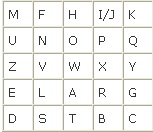Reference no: EM132653242
EMT4801 Engineering Mathematics - University of South Africa
QUESTION 1:
Consider the series
∑∞n=1 2n + 6/(n + 2)3.
For each of the following convergence tests state with justification whether the test proves convergence, divergence, or does not confirm either:
1.1 Ratio test.
1.2 Comparison test.
QUESTION 2:
2.1 Estimate the maximum error if the first four terms of the series
∑∞n=1 5n - 4/4n
is used to estimate the sum.
2.2 Determine the interval of convergence of the power series
∑∞n=1
(n+2)(x+2)n/2n(3n+2)
QUESTION 3:
3.1 Consider the transformation
w = 2/z + 2
from the z-plane onto the w-plane, where z = x + iy and w = u + iv.
3.1.1 Determine the equation of the image of the line y = x + 1 under this transformation.
3.1.2 Now compute the image of the points
A (-1, 0) ; B (0, 1) ; C (1, 2)
on the line in question 3.1.1.
3.2 Consider u(x, y) = (x + 1)2 - y2
3.2.1 Show that u is harmonic.
3.2.2 Determine the harmonic conjugate v of u.
3.3.1 Show how the real integral
-∞∫∞ x2/(x2+1)(x2+4).dx
may be converted to a contour integral for a suitable path. Make sure you describe or sketch the path used.
3.3.2 Now determine
-∞∫∞ x2/(x2+1)(x2+4).dx
using the contour integral described in (3.3.1).
QUESTION 4
Suppose we are given a system with input u (t) and output (t) described by the equation
x"+4x' + 7x = 5u' - 3u.
Assume also that the system is initially at rest (i.e. x' (0) = x(0) = 0 = u (0)).
4.1 Write down the transfer function G(p) of the system.
4.2 Now write down a state-space model for the system (yielding the same transfer function).
4.3 Use the initial and final value theorems to determine g (0+) and limt→∞ g (t) where g (t) = L-1(G (P)).
QUESTION 5
Use the method of convolution to find
L-1 [P2/(P2+1)2]
QUESTION 6
Suppose we have a system described by the difference equation with input {uk}
3Yk+2 + 4yk+1 + Yk = uk+1 - uk
which is initially in a quiescent state (y0 = y1 = 0 = u0)
QUESTION 7
7.1 Solve the following state-space equations by taking a Z-transform and using an inverse ma¬trix, given that

0 = x1(0) = x2 (0) and uk = {1, 0, 0,.....}.
7.2 Determine the values y0; y1; y2.